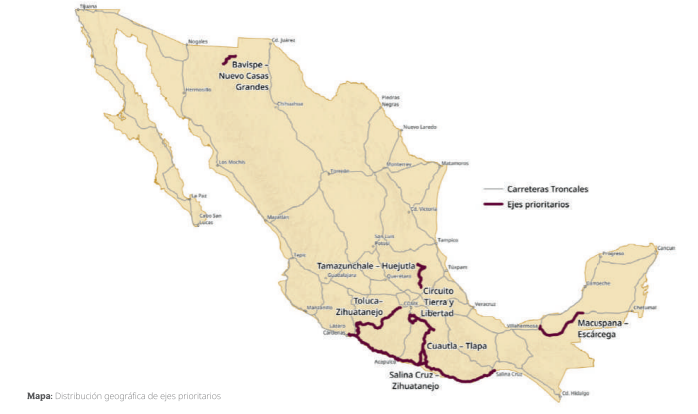The Cuautla-Tlapa highway axis is transforming the backwardness of southern Mexico by reducing travel time between the towns it connects.
The Cuautla-Tlapa highway connects the states of Guerrero, Morelos, and Puebla. It is part of a comprehensive strategy to improve the regional network in highly marginalized areas.
The project involves an estimated investment of 13.652 billion pesos and a final goal of 385 kilometers. According to the Ministry of Infrastructure, Communications, and Transportation (SICT), it will reduce travel times by up to one hour for residents of municipalities such as Igualapa, Cochoapa el Grande, Metlatónoc, and Malinaltepec.
The project seeks to boost mobility, strengthen territorial integration, and facilitate access to economic and social opportunities in the region.
Cuautla-Tlapa highway axis
During 2025, 35.3 kilometers are scheduled to be worked on, with an annual investment of 960 million pesos. As of June 30, 24 million pesos have been spent and 9% physical progress has been recorded, generating more than 10,600 jobs.
This project promotes economic development and territorial inclusion, as well as improving access to essential services for more than 7,700 people in one of the most disadvantaged regions of the country.
Poverty in Mexico
On July 16, 2025, a decree was published in the Official Gazette of the Federation that reforms, adds, and repeals various provisions of the Federal Budget and Fiscal Responsibility Law to strengthen the allocation of social spending based on empirical evidence.
The decree eliminates the National Council for the Evaluation of Social Development Policy (Coneval) and transfers its functions to the National Institute of Statistics and Geography (Inegi). Since then, Inegi has been responsible for issuing and updating technical guidelines for measuring poverty and evaluating social policy.
The transfer of powers seeks to strengthen fiscal oversight and ensure methodological consistency. It also aims to reinforce transparency and independence in the management of public finances.
In compliance with its new mandate, Inegi published the first official measurement of multidimensional poverty in Mexico on August 13, 2025. Based on the 2024 National Household Income and Expenditure Survey, it reported that 29.6% of the population, or 38.5 million people, lived in multidimensional poverty. Furthermore, 7 million people faced conditions of extreme poverty.

